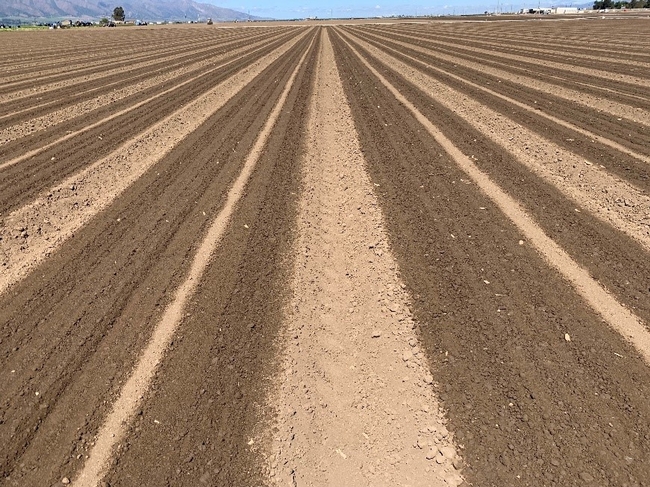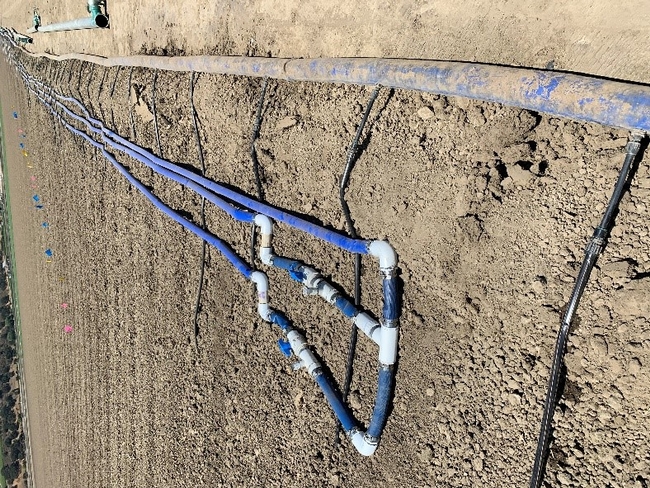Richard Smith is the Vegetable Crop Production and Weed Science Farm Advisor and Michael Cahn is the Irrigation and Water Resources Farm Advisor. Both are with the University of California Cooperative Extension in Monterey County.
Cultural practices for producing lettuce are changing with the development of new technologies and with the advent of new economic pressures. The shortage of labor has spurred development and adoption of technologies that make crop production less labor intensive. The most noticeable and dramatic of these technologies is the development of automated thinners and weeders. These machines are now routinely used in lettuce and other vegetable production (see: https://ucanr.edu/blogs/blogcore/postdetail.cfm?postnum=46608).
Equally important are technologies and practices that make irrigation less labor intensive. The use of permanent solid set sprinkler systems, where lateral pipes are positioned on an unplanted “guest bed,” as well at the use of single-use drip tape both increase the efficiency of labor for irrigation. Permanent solid-set sprinklers allow growers to cultivate and fertilize crops without needing to remove pipe from the field. Single-use drip tape can be shallowly buried and used to germinate many vegetable crops without the need to install sprinklers. After harvest the tape can be removed using specialized extraction equipment and brought to a recycling facility.

Single-use drip for germination of vegetables works well on many soil types where the water can move laterally to wet seedlines six inches or so to the side of the tape (Photo 1). This is a different mode of wetting the soil than sprinkler irrigation where water moves downward into the soil. Kerb (pronamide) is the principal lettuce herbicide and is quite water soluble. This characteristic of Kerb can result in it being moved too deep in light textured soil with heavy irrigations; this can result in poor weed control if Kerb is moved below the depth where weed seeds are germinating (e.g. the top 0.5 inch). In drip germinated lettuce, water moves upwards and laterally which facilitates keeping Kerb in the upper 0.5 inch of soil where it remains more active on germinating weeds.

In the first weed evaluation Kerb at both rates significantly reduced the number of purslane plants for each application method compared to the untreated control. There was no difference in the yield in any of the treatments in the sprinkler incorporated treatment, but there was an indication of slight yield reduction in the 5.0 pint/A rate in the drip applied Kerb treatment. These results indicate that injecting Kerb into the drip system during germination of the crop can provide good weed control in lettuce.
These studies help adapt the use of Kerb for a new irrigation technology and helps growers manage weeds better. It is especially important to have low to moderate weed pressure in fields when relying on autoweeders to conduct later weeding operations. Low weed populations help the automated technologies work more efficiently. All of this is to the good to help growers manage costs and to adjust to new realities with less labor to grow labor-intensive crops.